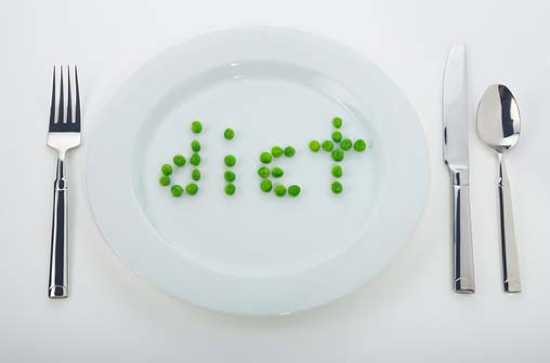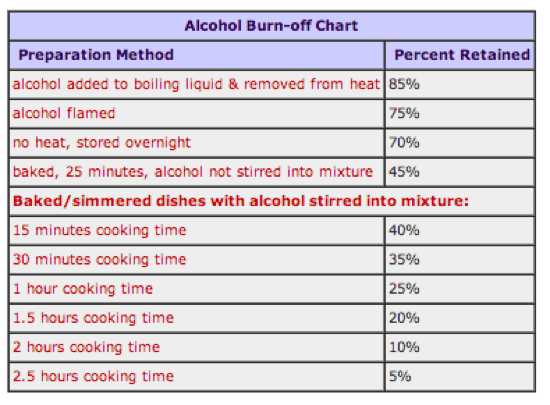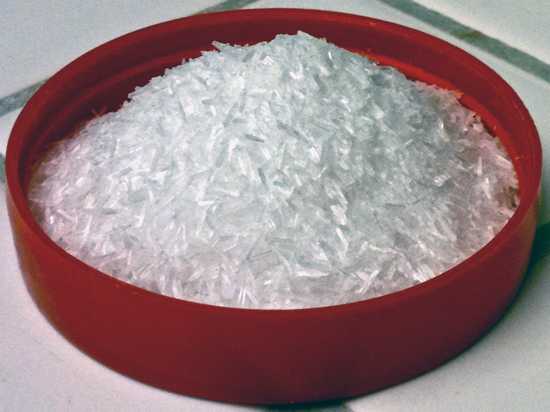Fallacy: You are fat and need to lose weight No magical combination of foods, avoidance of foods, increase in the intake of certain foods, or special diet plans (no matter how bizarre) will make you lose weight. The only way you can lose weight is to eat fewer calories than you burn in your daily activities. If you burn 7,000 kilojoules a day, you need to eat 7,000 kilojoules to maintain your weight. If you want to lose weight, eat a thousand less (give or take) a day and you have it. It doesn’t matter whether your daily calories come from chocolate, salad, fat, sugar, or beans. The reason that fad diets work so well is that the people subscribing to them are initially motivated and ultimately eat fewer calories than they are burning. Diets like the Atkins (in which you must eat only protein) work in the same way – cream and high-fat meats are so rich you can only eat so much so you eat less. The best diet (which should be your diet for life) is to moderate the amount of food you eat. It doesn’t matter what you eat – just don’t eat too much. Did you know: Robert Atkins, inventor of the Atkins Diet, died after sustaining head injuries when he slipped on some ice after a snow storm in New York. He was 72 years old.
Fallacy: Cooking or flaming removes most alcohol From time to time we have a special event or family occasion that requires some fancy cooking. These are, for the average home cook, the times we like to cook extravagant recipes that usually require large quantities of booze. And that is fine for a family meal because the cooking removes the alcohol making it safe for the alcoholics and children amongst us. Or at least that is what we have all been led to think. In reality, it is actually quite difficult to remove alcohol from food by cooking. Setting fire to alcohol in the pan (which seems to be the most extreme way to burn off the booze) actually reduces the total alcohol percentage by a mere 25%. In other words, when you add a cup of brandy to a pan and set it alight, once the flames go out you still have the equivalent of 3/4 of cup of brandy left behind (alcohol intact). If you want to reduce the alcohol to 0% – good luck; cooking alcohol for 2.5 hours with other liquids and ingredients still leaves 5% alcohol behind. That certainly explains some of the more unusual episodes of Julia Child’s cooking show. Did you know: Alcohol in high doses has been known to cause increased rates of “regrettable” sexual encounters in humans.
Fallacy: Salt kills Salt is a naturally occurring substance that, when added to low-salt food, enhances and deepens flavor. The human body has around 1% salt in it and this is constantly removed through urination, sweating, etc. The salt is essential to our health so we need to replace it through our diet. Excess salt does not cause a high salt percentage – our bodies are smart enough to handle it. If you eat too much salt you just pee it out. There may be some negative impacts on the body through extremely high consumption of salt in those with blood or heart disorders, but the average healthy human can quite happily over-consume the substance without ill-effect. To kill yourself with salt, you need to consume about 1 gram per kilo of body weight. In other words, if you weigh 130 pounds you need to eat around 5 tablespoons of salt – an immense amount of salt and you would probably vomit before you could finish it (because salt is an emetic). Did you know: Before Biblical Judaism ceased to exist, salt was mixed with animal sacrifices. This originated from Moses in Leviticus 2:13 which states: “Whatsoever sacrifice thou offerest, thou shalt season it with salt, neither shalt thou take away the salt of the covenant of thy God from thy sacrifice. In all thy oblations thou shalt offer salt.” The salt was a symbol of wisdom and discretion. [Stolen with impunity from one of my previous lists.]
Fallacy: Grilled meat is bad for you When rats are fed high doses of nicely browned grilled meat they have a statistically higher chance of getting cancer. But that is rats. So far no study of humans has found the same result. Despite that, the US National Toxicology Program says that these chemicals (heterocyclic amines) are “reasonably anticipated” to be carcinogens in humans. Why? No one is really sure. Tripterygium wilfordii is deadly to rats but is consumed by humans as an oral contraceptive with no negative impact. A recent study of humans consuming grilled meat found no association between that and cancer. Let’s face it – for thousands of years humans have cooked meat and evolved (some might say) to be tolerant to it. When was the last time you saw a rat cooking a barbecue? Humans are not rats – what is deadly to a rat is not always deadly to a human. Did you know: Potato chips, breakfast cereals, crusty bread, etc. are all crunchy because of the same chemicals as those that produce the nice browned effect on grilled meat. Furthermore, these chemicals are known to be antioxidants that suppress the bacteria that causes peptic ulcers. Speaking of that delicious crust around a good steak…
Fallacy: Pork and poultry should be cooked to high temperatures to make them safe for eating Trichinella spiralis, a type of roundworm, is the main culprit behind the huge campaign for cooking pork to 71c / 160f (beyond well-done). For decades governments around the world have been promoting cooking at that level as the only safe way to eat pork. Sadly this is another case of science and government’s failure to be able to backtrack when they are wrong. Between 1997 and 2001 eight cases of roundworm infection attributed to pork occurred in the US. This is from a total consumption of 32 billion kilos (70 billion pounds) of pork. Trichinella spiralis infection is one of the rarest diseases known to modern medicine. When it does occur it is neither fatal nor serious and is easily treated. Sadly, to prevent such a minuscule amount of infections, virtually all pork eaten is destroyed in the cooking. Pork can be safely consumed at temperatures as low as 55c (135.5f) which results in a moist and pink cut of meat. The same is also true of chicken which can be safely eaten rare (cooked to 58c – 136f). At these temperatures both trichinella spiralis and salmonella are destroyed. Pictured above is a delicious cut of medium-rare pork. Did you know: Raw chicken sashimi (toriwasa) is popular in Japan; it is served with a mirin and soy dipping sauce and a little ginger. Along with the raw chicken flesh, raw chicken gizzards and hearts are also consumed.
Fallacy: Man is a vegetarian Utter tripe most regularly spewed by irrational vegans and some vegetarians. The lengths that these people will go to disprove man’s meat-eating disposition are, at times ludicrous. From posters of Jesus denouncing the consumption of meat (contrary to the fact that Christ’s most significant act in the Bible – second to his death – was the last supper which was a big roast lamb dinner) to statements from Gandhi denouncing the practice as evil (they tend to not worry too much about other aspects of his life which may give one cause to reconsider his words as morally authoritative). In reality, at least two million years ago our ancestors were eating cooked foods, and a Berkeley anthropologist specializing in diet has gone so far as to say that we would not have evolved into humans were it not for meat in our diet. According to said “evolutionary dietician” Katharine Milton, “it’s unlikely that proto humans could have secured enough energy and nutrition from the plants available in their African environment at that time to evolve into the active, sociable, intelligent creatures they became. Receding forests would have deprived them of the more nutritious leaves and fruits that forest-dwelling primates survive on.” Her thesis complements the discovery last month by UC Berkeley professor Tim White and others that early human species were butchering and eating animal meat as long ago as 2.5 million years. Did you know: Veganism (not just the refusal to eat meat but the complete abstention from all animal products) was a concept invented in the 1940s by Englishman Donald Watson an avowed vegetarian who decided to take his diet to fanatical levels in all areas of his life.
Fact: Organic foods are potentially more toxic than non-organic Plants left in the wild naturally develop complex methods to self-manage pests. Often this is in the form of mild toxins – these toxins can repel pests but, in high doses can be harmful to humans. In organic farming many plants are left untreated and this allows those toxins to increase more than in pesticide treated produce. In other cases natural pesticides are used in place of man-made – pesticides such as nicotine infusions. Nicotine is known to be deadly to humans when consumed (in small doses what’s more) yet the majority of “unnatural” pesticides have been rigorously tested for human safety. There are many loopholes in the rules around organic produce which allow other deadly products such as pyrethrum and rotenone to be used in organic farming – both of these chemicals have been linked to Parkinson’s disease. Also many things labeled as organic contain non-organic mater – “organic muffins” are leavened with baking soda which is inorganic (not a product of a living thing) and it is purified through a chemical process. Other ingredients are also allowed despite non-organic origins – table salt, for example, which is heavily chemically processed for purification. Most of the higher quality products bearing the label “organic” are not of a superior standard because they are organic – they are superior because they come from small farms where greater personal care goes into the farming. Unfortunately most organic produce these days is mass produced by conglomerates jumping on the latest bandwagon. Thus the quality of organic produce is usually no better than non-organic and, as has been stated, can be potentially more harmful. Did you know: No study exists to prove that man-made agricultural chemicals cause harm to people who buy and eat nonorganic fruits, vegetables, or meats.
Fallacy: High fiber reduces cancer risk Thanks to Doctor Denis Burkitt who spent some years in Kenya and Uganda studying the diet of the natives, most of the western world has been fooled into thinking high fiber helps prevent cancer. Unfortunately for us poor bewildered masses he was wrong. Dr Burkitt noticed during his tenure that colorectal cancer was rare in that part of the world. Alas the poor doctor fell for the common logical error of post hoc ergo propter hoc (Coincidental Correlation). The native Kenyan and Ugandans ate lots of fiber and, according to Burkitt, consequently suffered low incidences of the cancer which ultimately took his name: Burkitt’s lymphoma. His “research” was ground breaking and realizing the huge financial benefits, the Seventh-Day-Adventist company Kellogs (amongst others – Uncle Sam, Sanitarium – another tax-free company owned by the Seventh-Day-Adventists, etc) began to propound the benefits of an excessively high-fiber diet. But what does science say? Unfortunately a lot of “science” is reliant on donations from such companies as the aforementioned so they tend to say little or nothing at all. But the few studies that have been undertaken (and oft-times buried shortly thereafter) show no benefit to a high fiber diet. In fact, horrifyingly for those of us who have been persuaded by these multinationals that excess fiber is good for us, one study (The Women’s Health Initiative) showed an eight percent higher risk of invasive cancer of the colon or rectum in a low fat / high fiber diet. Food for thought. Did you know: When studies began to show that Burkitt was probably wrong with his fiber/cancer link, new studies (from the previously mentioned conglomerates) showed that a high fiber diet reduces risk of heart disease and diabetes. These new “findings” also lack any credible scientific backing. But they are definitely helping the Seventh-Day-Adventists maintain a roaring trade in the “health” food business.
Fact: You eat MSG every day Look back over your food consumption today. Did you eat any of the following:
- Processed snack food (for example, chips, doritos, cheetos, etc.) * Meat * Any non-meat protein (for example, beans) * Mushrooms * Tomatoes * Soy sauce * Cheese (especially hard cheeses) * Wheat based products (for example, bread) Every one of the above foods (plus many, many more) contain high concentrations of MSG. Some (the processed foods) have MSG added, but the rest are all natural. By now most Listverse readers should know that Chinese Restaurant Syndrome is a huge fraud unintentionally (maybe) perpetrated by well-meaning people, but, alas, there are still millions of people who think MSG is the cause of all their woes. There are huge websites dedicated to helping “MSG-sensitive” people avoid the dreaded chemical in their daily lives. Let us get this straight once and for all: MSG occurs naturally in most foods and no single study ever has been able to give even the slightest hint of evidence that MSG (naturally occurring or extracted from naturally occurring sources) is harmful in any way. Parmesan cheese has the second highest concentration of MSG with sun-dried tomatoes and tomato paste also having massive doses. So why (as Jeffrey Steingarten – famed food critic – put it) have we “never heard of of a Parmesan headache or Tomato-Paste Syndrome”?) Incidentally – KFC chicken coating is not made of 11 secret herbs and spices – it is flour, salt, pepper, paprika, and MSG. Now you know why it is “finger licking good”. Did you know: Europeans and Americans consume an average of 1 gram of MSG from natural food sources every day of their lives.
Fallacy: Fat kills Much of this fallacy revolves around the role of cholesterol in heart disease. HDL (“good” cholesterol) and LDL (“bad” cholesterol) are actually lipoproteins that contain exactly the same cholesterol; HDL (high density lipoproteins) are merely the mechanism used to transport cholesterol from bodily tissue to the liver – thereby reducing the amount of cholesterol in the blood stream. LDL (low density lipoproteins) deliver cholesterol to places in the body that need it. The failure to properly differentiate between these lipoproteins has led to many erroneous studies on the dangers of cholesterol and fat in our diets. Studies have shown that a high fat diet causes an increase in overall cholesterol in the blood stream. Consequently people have the idea that high fat = high cholesterol = high risk of heart disease. In reality, more nuanced studies show that high fat actually causes a dramatically higher ratio of “good” cholesterol to bad. This, according to the commonly held views of scientists, should actually result in a decrease of heart disease risk – but no one will admit it. Three randomized controlled clinical trials recently discovered that a reduced total fat or saturated fat diet over several years results in no lowering of heart disease, stroke, or other cardiovascular disease. In other words, high-fat diets (such as the French enjoy) probably has no bad impact on your health. Did you Know: Due to government guidelines and what can only be called anti-fat propaganda from the 1970s until now has lowered fat consumption by over 10% per person on average per year. Coincidentally (maybe) obesity rates have increased at the same time by around 10%. It is highly possible that a strict low-fat diet can prevent a person from feeling satiated and consequently over-eat “low-fat” but high-calorie foods. Read More: Facebook Instagram Email
























